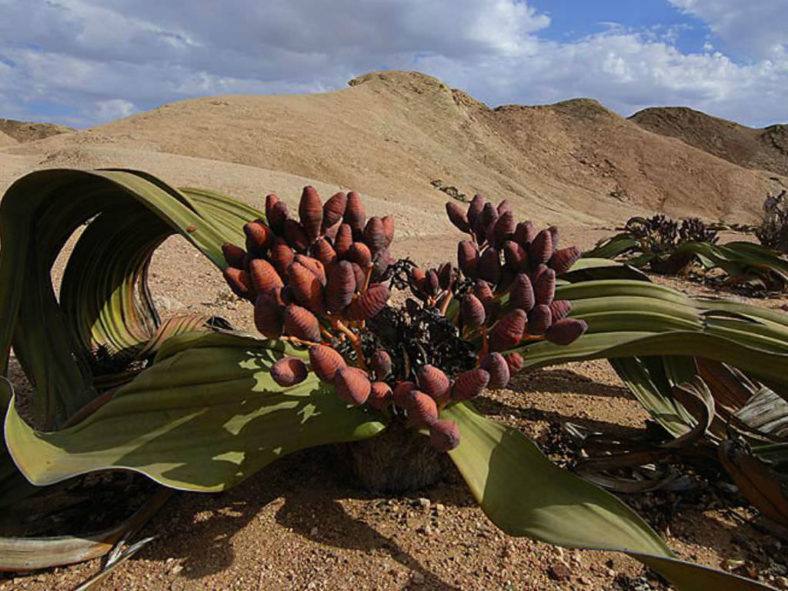Advertisements
Welwitschia belongs to the group of gymnosperm plants. Due to its unique characteristics, botanists classified Welwitschia into a distinct family called Welwitschiaceae, which contains no other species.
This unusual plant is found only in the Namib Desert, located in Namibia and Angola. Sometimes, it is referred to as a Living Fossil because it has been on the planet for millions of years. Unfortunately, Welwitschia is prone to fungal diseases, and desert animals often target it. Fortunately, this plant remains abundant in the wild and is not listed as an endangered species.
Interesting Facts
- Welwitschia consists of a stem, two leaves, and roots. This plant usually grows 20 inches (50 cm) in height and 6.6 feet (2 m) in length. Larger plants are often seen in areas with rare rainfall.
- The largest recorded specimen reached 6 feet (1.8 m) in height and 28 feet (8.5 m) in length.

Advertisements
- Welwitschia has a short but firm, wooden stem without branches. The stem is hollow and has the shape of an inverted cone.
- Welwitschia develops two leaves that grow continually throughout the plant's whole life. Leaves are broad, leathery, and belt-shaped.
- Leaves become frayed and resemble a bunch of worn-out ribbons after decades of exposure to harsh weather conditions, strong winds, and the constant abrasion of sandy ground.
- Welwitschia has a long taproot that can reach water hidden deep underground. However, due to a lack of rain and available water, the plant absorbs most water from fog and dew.
- Welwitschia is a dioecious plant, meaning each plant develops either male or female reproductive organs. The male plant produces salmon-colored cones, while the female produces larger bluish-green cones.
- Flowering takes place from summer to autumn. Both male and female plants produce large quantities of nectar, which attracts wasps, tree bugs, and flies, thereby ensuring pollination.
- Female cones reach maturity nine months after fertilization. The degradation of female cones results in the release of seeds. The seed has wings that facilitate wind dispersal.
- Seeds can remain viable (able to germinate) during an extended period. However, heavy rains are required for successful germination. As a result, only a small number of seeds will germinate. The rest will be lost due to fungal diseases, as well as being part of the diet of desert animals.
- Antelopes and rhinos eat leaves and soft stem parts to obtain water. The damaged plant usually recovers.
- Welwitschia is also known as the Onion of the Desert because indigenous people eat the plant's core. It can be used either raw or as a part of a cooked meal.
- Welwitschia is an ancient plant. It originated from the Jurassic period, when gymnosperms were the most dominant plants on Earth.
- Although it may seem like a challenging task, the plants can be easily cultivated as houseplants.
- Welwitschia usually lives from 300 to 500 years in the wild. However, some plants can survive for over 2000 years.
Source: softschools.com
Links
- Back to genus Welwitschia
- Succupedia: Browse succulents by Scientific Name, Common Name, Genus, Family, USDA Hardiness Zone, Origin, or cacti by Genus
Advertisements